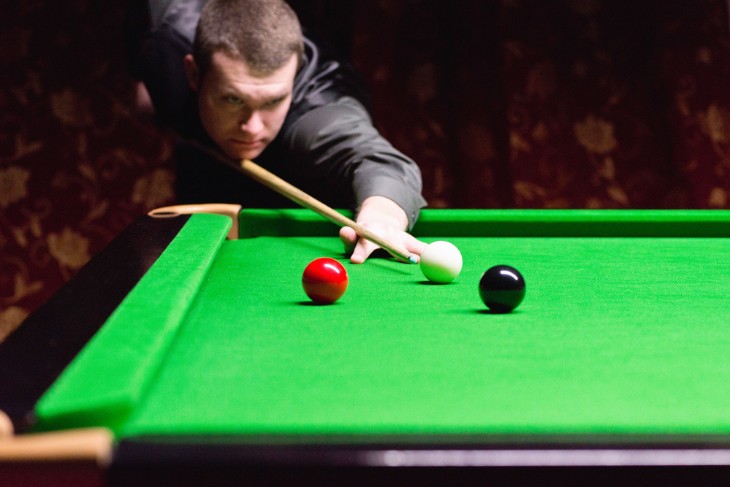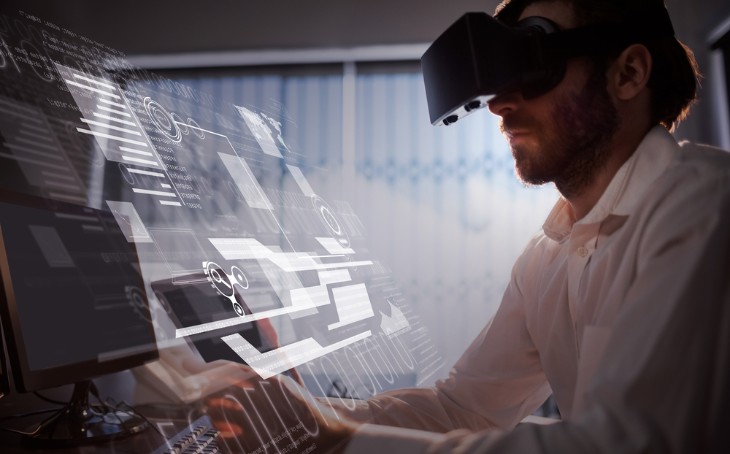Snooker, a game long celebrated for its skill and precision, is entering a new era with the advent of Virtual Reality (VR) and Augmented Reality (AR). These technologies are not just futuristic concepts but are rapidly becoming integral parts of snooker training. This shift towards the virtual world is set to revolutionize how players train, learn, and enhance their game.
AR adds another dimension to training. It overlays digital information onto the real-world setting, giving players instant feedback and insights. This can range from showing the trajectory of the ball to providing strategic tips. Such technology makes learning more interactive and effective.
The integration of VR and AR into snooker training is not just a technological advancement; it's a game-changer. It opens up opportunities for players of all levels to access high-quality training tools. Beginners can learn the basics more quickly, while advanced players can fine-tune their strategies and techniques.
Read on more to find out how these technologies mesh with snooker!
Understanding VR and AR: The Technological Marvels Redefining Training
Virtual Reality (VR) and Augmented Reality (AR) are technological marvels transforming snooker training. To understand their impact, it's essential to grasp what these technologies are and how they work.
VR immerses users in a completely digital environment. When you wear a VR headset, you enter a virtual world. In the context of snooker training, this means players can practice in a simulated snooker hall.
Everything from the table to the cues and balls is digital. This allows players to train anytime, anywhere, without needing a real table.
AR is different but equally innovative. It doesn't replace the real world with a digital one. Instead, it adds digital elements to it. For snooker training, this could mean seeing digital lines on a real table, showing where the ball will go when hit. It can also provide real-time tips and feedback. This makes training more informative and interactive.
Both VR and AR offer unique advantages. VR's complete immersion helps players focus and practice in a distraction-free environment. It's like having a personal snooker hall at your fingertips. On the other hand, AR enhances the real-world training experience. It adds a layer of information that can help with decision-making and strategy.
The beauty of these technologies lies in their flexibility and accessibility. They allow players to train in ways that were not possible before. With VR and AR, training can be more engaging, efficient, and tailored to individual needs.
The Role of VR in Enhancing Snooker Skills: A Virtual Practice Arena
Virtual Reality (VR) plays a crucial role in enhancing snooker skills. It serves as a virtual practice arena, offering a unique way for players to improve their game. VR creates a realistic snooker environment where players can practice without the need for a physical table. This technology is not just about simulating the look of snooker; it accurately replicates the physics of the game, from the way the balls move to how they interact with the cue.
One major advantage of VR is the ability to practice anytime and anywhere. Players no longer need access to a snooker hall. They can put on their VR headset and instantly be on the snooker table, ready to practice. This flexibility is a game-changer, especially for those who have limited access to snooker facilities.
VR also allows for focused practice. Players can repeat specific shots or scenarios as many times as needed. This repetition is key in mastering certain techniques and strategies. In a virtual world, there's no waiting for others to finish their game or worrying about occupying the table for too long.
Another significant benefit is the ability to track and analyze performance. VR systems can record every shot and provide feedback. This could include the angle of the cue, the force of the shot, or the spin of the ball. Such detailed analytics help players understand their strengths and weaknesses and make informed improvements.
For beginners, VR offers a no-pressure environment to learn the basics. They can get comfortable with the rules and techniques of the game without feeling self-conscious. For advanced players, VR is a tool to refine their skills and experiment with complex shots and strategies.

VR for Strategy Development and Game Analysis
Virtual Reality (VR) is not just a tool for practising shots; it's also invaluable for strategy development and game analysis in snooker. This aspect of VR is critical for players looking to elevate their game to a higher level. By using VR, players can analyze their gameplay in detail, identifying areas for improvement and refining their strategies.
One of the key benefits of VR in strategy development is the ability to replay and scrutinize every shot. Players can watch their shots from different angles, understanding better how their actions affect the game's outcome. This detailed review helps in pinpointing mistakes and learning from them. For instance, a player might notice that they consistently miss shots from a certain angle and can then focus on improving in that area.
Moreover, VR enables players to simulate various game scenarios. They can set up specific situations that they find challenging and practice them repeatedly. This targeted practice is essential for mastering difficult shots and complex strategies. It also prepares players for a wide range of scenarios they might face in actual matches.
Another advantage of VR is its ability to provide immediate feedback. After each shot, players can receive data on their performance, such as the speed and spin of the ball or the accuracy of the shot. This instant feedback is crucial for making quick adjustments and learning in real time.
For coaches, VR is a powerful tool for teaching and training players. They can use VR to demonstrate techniques and strategies, providing a visual and interactive learning experience. This can be especially helpful for explaining complex concepts that are hard to convey through traditional coaching methods.
AR in Snooker Training: Blending the Real and the Virtual for Enhanced Learning
Augmented Reality (AR) in snooker training is about blending the real and the virtual world to enhance learning. Unlike VR, AR doesn't create a fully immersive virtual environment. Instead, it adds digital elements to the actual physical world of snooker. This technology has the potential to transform how players train and improve their skills.
One of the main ways AR helps in snooker training is by providing real-time data and visual aids. Imagine playing on a standard snooker table but with digital lines showing the projected path of the ball. This can help players understand the angles and physics of the game better. It's like having a coach who can visually guide you on every shot.
AR also helps in decision-making during practice. For example, it can show the success rate of different shots, helping players choose the best strategy. This kind of information is incredibly valuable, especially when learning new techniques or honing advanced skills.
Another advantage of AR is its accessibility. Players don't need a fully equipped VR setup. They can use AR apps on smartphones or tablets to overlay digital information onto their real-world practice sessions. This makes it easier to incorporate into daily training without much hassle.
For beginners, AR can make learning more interactive and fun. It adds an element of gamification to training, which can be motivating and engaging. For advanced players, AR provides detailed analytics and feedback, helping them refine their tactics and improve precision.
The Convenience and Accessibility of AR in Training
The convenience and accessibility of Augmented Reality (AR) in snooker training are what set it apart. AR technology makes advanced training tools available to everyone, not just professional players. This ease of access is revolutionizing how players of all levels improve their skills.
One of the main benefits of AR is that it doesn't require expensive equipment. Unlike Virtual Reality (VR), which often needs a headset and other gear, AR can be used with just a smartphone or tablet. Players can download AR apps and start using them straight away on their regular snooker table. This simplicity means that anyone with a smartphone can access sophisticated training tools.
AR is also convenient because it integrates seamlessly into regular training sessions. Players don’t have to change their routine to use AR. They can set up their device, start an AR app, and get instant feedback while they play. This helps players make the most of their practice time, as they can immediately apply the insights they gain from the AR technology.
Moreover, AR is adaptable to different skill levels. Beginners can use it to learn the basics, like understanding angles and shot planning. Advanced players can use it for more detailed analysis, like tracking shot accuracy and speed. This adaptability means that AR can grow with the player, always offering relevant and helpful information.
For coaches, AR is a valuable tool. They can use it to show players exactly where they need to improve. It's like having an extra set of eyes that can see things in ways humans can’t. This can make coaching more effective and efficient.
The Impact of VR and AR on Training Regimes: A Shift in Paradigms
The introduction of Virtual Reality (VR) and Augmented Reality (AR) into snooker training is shifting traditional training paradigms. These technologies are transforming the way players prepare, learn, and refine their skills. This change is significant, marking a new era in snooker training.
With VR, players experience a complete immersion in a digital world. This allows for focused, uninterrupted practice sessions. They can practice any shot, at any time, without the need for a physical space. This level of convenience and flexibility was unheard of in traditional training methods. It means players can train more efficiently, fitting practice into their schedules whenever it suits them.
AR, on the other hand, enhances the real-world training experience. It provides players with real-time data and visual feedback right on the snooker table. This immediate feedback is invaluable. It helps players understand the impact of their shots instantly and make necessary adjustments. Such quick learning was not possible with traditional coaching methods.
Both VR and AR offer personalized training experiences. Players can tailor their practice sessions to their specific needs. Whether it’s mastering a particular type of shot or working on a weakness, these technologies allow for highly focused training. This personalization ensures that each player gets the most out of their practice time.
Another significant impact of VR and AR is on remote coaching. Coaches can guide players through virtual sessions, offering advice and feedback without being physically present. This breaks down geographical barriers, allowing players to receive coaching from the best, no matter where they are.

The Potential for Enhanced Mental Training with VR and AR
Virtual Reality (VR) and Augmented Reality (AR) offer significant potential for enhancing mental training in snooker. Mental strength and focus are as important as physical skills in snooker, and these technologies provide new ways to develop these aspects.
VR, with its immersive environment, is perfect for simulating high-pressure match situations. Players can practice in scenarios that mimic real tournament conditions, helping them prepare mentally for the stresses of competitive play. This kind of training can improve a player’s ability to stay calm and focused under pressure, a crucial skill in high-stakes matches.
AR also contributes to mental training, especially in strategic thinking and decision-making. By providing real-time data and visual cues during practice, AR helps players analyze the game more deeply. This analysis improves their understanding of the game, helping them make better decisions during actual play.
Moreover, VR and AR can help in visualization exercises. Athletes often use visualization to improve performance. With VR and AR, players can visualize their shots and strategies more vividly, reinforcing their mental preparation and boosting their confidence.
These technologies also make training more engaging and enjoyable, which is essential for maintaining motivation. The gamification of training through VR and AR can keep players interested and focused, making the mental aspects of training less of a chore and more of a fun challenge.
Finally, the adaptability of VR and AR means they can be tailored to individual needs. Players can adjust the level of difficulty and the types of scenarios they face, ensuring that their mental training is always challenging and effective.
Bridging the Gap Between Amateur and Professional Training
Virtual Reality (VR) and Augmented Reality (AR) are powerful tools in snooker training, bridging the gap between amateur and professional levels. Traditionally, high-level training resources have been accessible only to professionals due to cost and availability. However, VR and AR are changing this, making advanced training tools available to a broader audience.
For amateur players, access to quality training can often be a challenge. Limited resources and guidance can hinder their progress. VR and AR technologies provide these players with an opportunity to experience and learn from advanced training techniques. They can practice in simulated environments with VR or receive real-time feedback and analytics through AR. This access to high-quality training resources was once exclusive to professionals but is now within reach of amateurs.
These technologies also level the playing field in terms of coaching. With VR and AR, amateur players can receive the same level of coaching and feedback that professional players do. They can analyze their game, work on specific skills, and receive guidance that was previously unavailable to them.
Furthermore, VR and AR can help amateurs practice more effectively. By simulating real game scenarios and providing interactive learning experiences, these players can improve faster. They can focus on areas that need improvement and track their progress over time.
The cost-effectiveness of VR and AR is another factor that helps bridge the gap. Instead of investing in expensive equipment or coaching, players can use these technologies at a fraction of the cost. This affordability makes advanced training more accessible to a wider range of players.
Take Away
The introduction of Virtual Reality (VR) and Augmented Reality (AR) into snooker training marks the beginning of a new era. These technologies are reshaping the way players train, learn, and improve their skills.
Both VR and AR have made advanced training more accessible and affordable. They bridge the gap between amateur and professional training, offering high-quality resources to a wider range of players. This democratization of training resources is a significant step forward in the world of snooker.
Embracing these technologies is essential for the continued growth and development of snooker. VR and AR are not just tools for improvement; they represent a shift in how players approach the game. They encourage innovation, adaptability, and a deeper understanding of snooker.
For more information:




.webp)


 (1).webp)




















